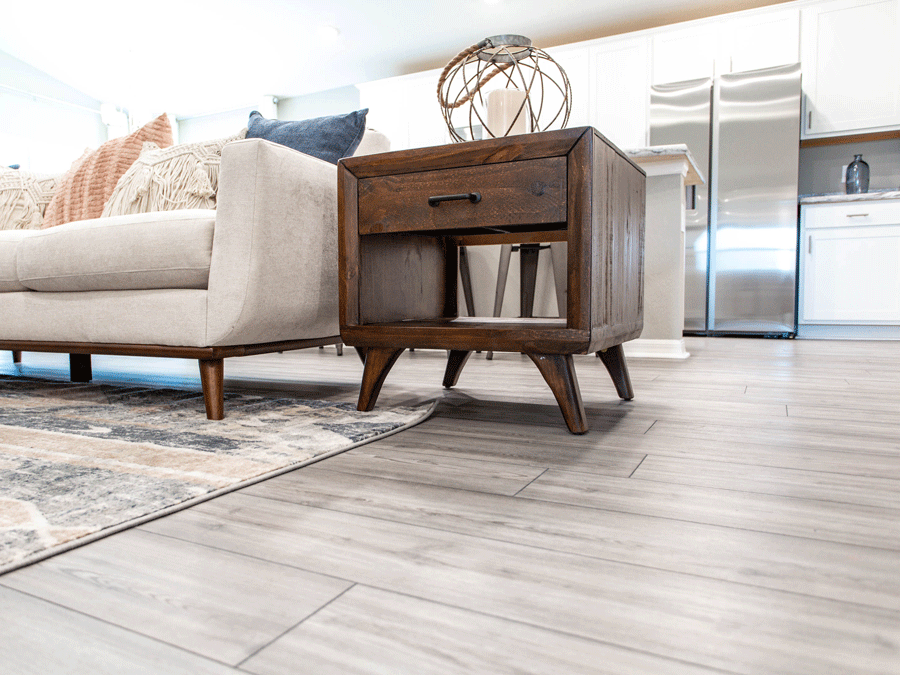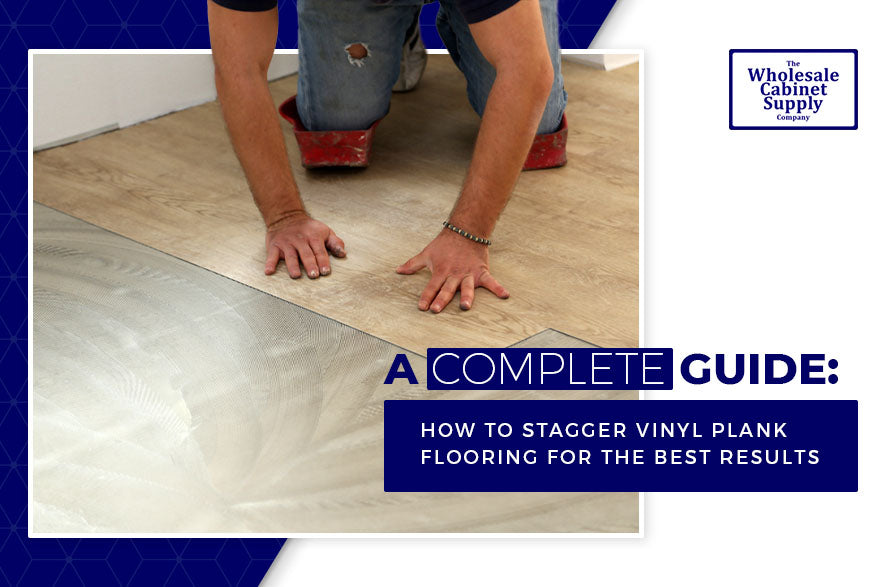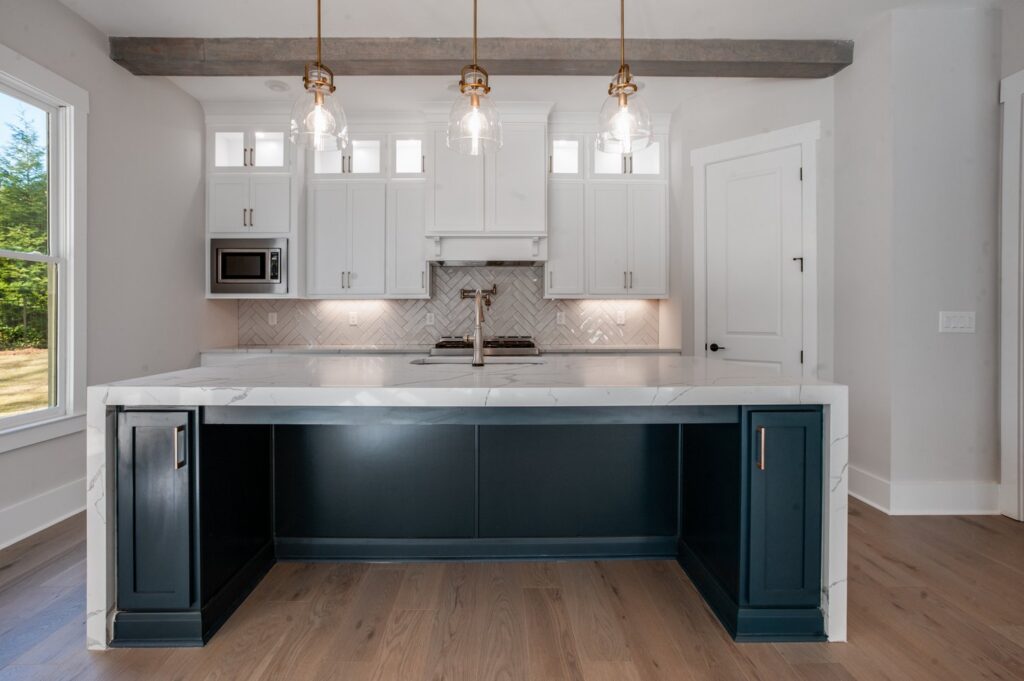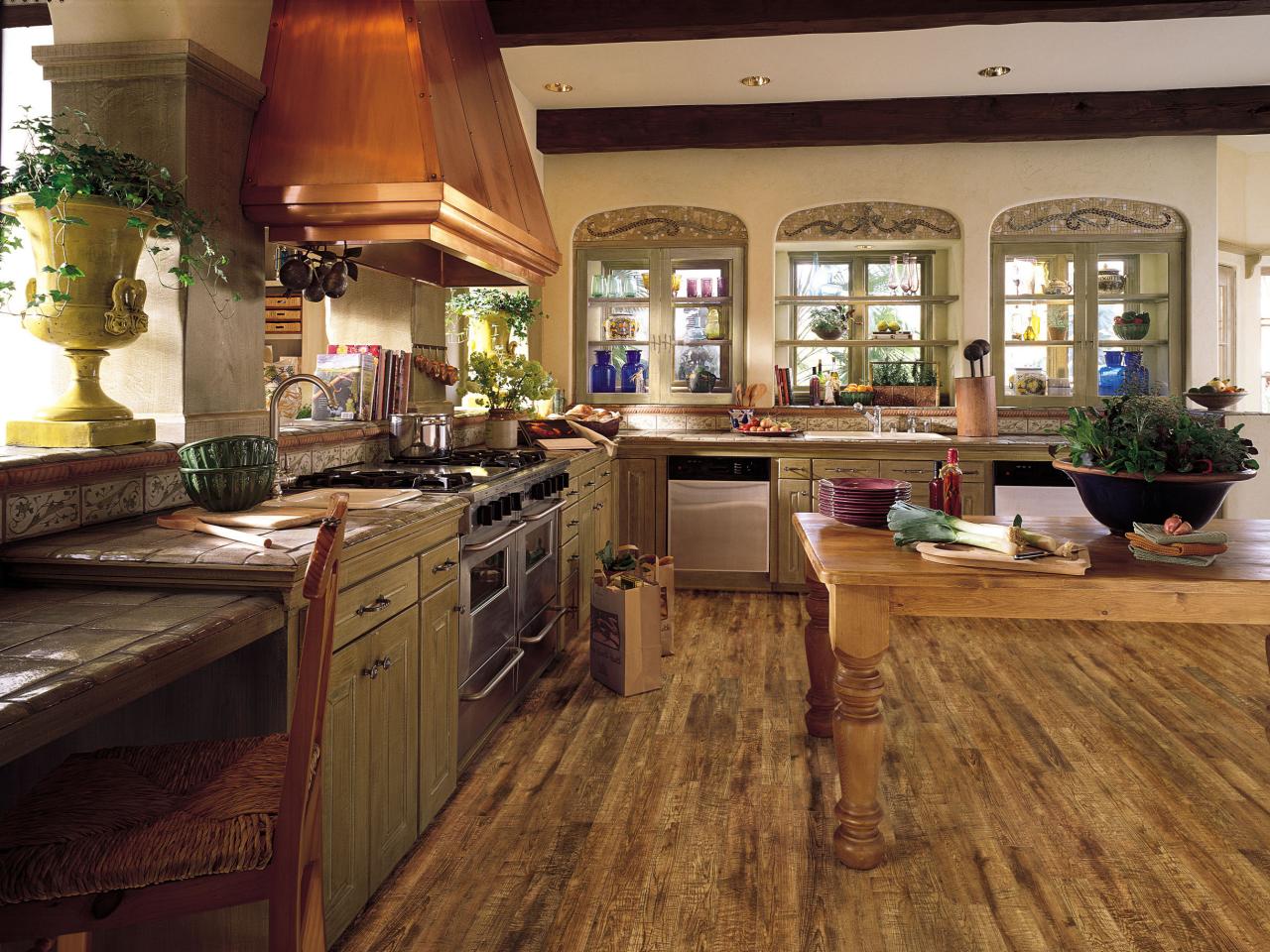Install laminate flooring after installing cabinets to allow the flooring to expand and contract properly. This prevents potential issues such as buckling or separation.
It’s a best practice to leave the kickboards off the cabinets until the flooring is laid to create a cleaner look. Most experts recommend first installing the cabinets and then the flooring, as it’s more cost-effective and conducive to a cleaner look.
By adhering to this order, the flooring can be smoothly positioned slightly under the cabinets, providing a polished and seamless finish to the room. It also allows for easier installation and prevents potential damage to the new flooring during the construction process.

Credit: www.highlandhomes.org
Benefits Of Installing Laminate Flooring Before Cabinets
Laminate flooring can be a stunning addition to any home, providing a durable and stylish surface that beautifully complements your interior design. When it comes to the installation process, opting to install laminate flooring before cabinets offers several benefits that can streamline the overall construction or renovation project.
More Cost-effective
Installing laminate flooring before cabinets can be more cost-effective in the long run. By having your flooring in place first, you avoid the need to trim or cut your flooring to fit around the cabinets. This not only saves time but also reduces material waste, ultimately cutting down on unnecessary expenses.
Cleaner Look
Leaving kickboards off your cabinets until the flooring is laid allows the laminate to go slightly under the cabinets, creating a cleaner look. This seamless finish gives your space a more polished and professional appearance, enhancing the overall aesthetic appeal of your interior design.
Avoid Damaging Flooring
Installing cabinets before the laminate flooring can pose the risk of damaging the floors during construction. With the flooring already in place, you can safeguard it from potential scratches, dents, or other forms of damage that may occur during the cabinet installation process. This helps maintain the pristine condition of your laminate flooring, ensuring it retains its beauty for years to come.
Stability And Fastening
When the cabinets are installed on top of the subfloor or finished flooring, they need to be securely fastened for stability. It’s crucial to ensure that the kitchen cabinets are properly fastened to the floor to prevent any potential damage. Additionally, consulting a professional can help verify whether the cabinets can be fastened to the floor, providing peace of mind and avoiding any unnecessary complications.
Expert Recommendations For Installing Laminate Flooring
When it comes to installing laminate flooring before or after cabinets, experts recommend installing the flooring after the cabinets are in place. This allows for proper expansion and contraction of the flooring and creates a cleaner look by placing the flooring slightly under the cabinets.
Install Cabinets First
It’s always advisable to install cabinets first before laying down laminate flooring. By doing so, you ensure that the cabinets are properly in place, without any disruptions from the flooring installation process. This approach also reduces the risk of causing damage to the flooring during cabinet installation.
Leave Kickboards Off Cabinets
Many experts suggest leaving the kickboards off your cabinets until the flooring is laid. This allows the flooring to go slightly under the cabinets, creating a cleaner look. It also gives ample space for the laminate flooring to expand and contract, especially in response to temperature changes, without being hindered by the presence of kickboards.
Consult A Professional
It’s crucial to consult a professional before proceeding with the installation process. A professional can advise on specific considerations, such as fastening the cabinets to the floor for stability and ensuring the proper sequence of installation to minimize potential damage or issues. Their expertise can help you achieve a seamless and visually appealing result.
Exceptions To The Rule
When it comes to installing laminate flooring before or after cabinets, the general rule is to install cabinets first. This helps with cost-effectiveness and allows the flooring to go slightly under the cabinets, creating a cleaner look. Leaving the kickboards off the cabinets until the flooring is laid is often recommended to allow for expansion and contraction of the flooring.
When it comes to installing laminate flooring before or after cabinets, there is a general rule to follow – install the cabinets first. However, there are a few exceptions to this rule that you should consider.
Floating Floors
One exception to the rule is when you have chosen to install floating floors. Floating floors are not attached to the subfloor and instead, they “float” above it. These types of floors include laminate, vinyl plank, and engineered hardwood.
When installing floating floors, it is generally recommended to install them before the cabinets. This is because floating floors need room for expansion and contraction due to temperature changes. If you were to install the cabinets first and then the floating floors, it might restrict the movement of the floors and cause issues such as buckling or separation.
Thicker Flooring
Another exception to the rule is when you have chosen a thicker type of flooring, such as tile or stone. These types of flooring are generally more durable and can withstand the weight of the cabinets. In this case, it is often more cost-effective to install the cabinets first and then the flooring.
Thicker flooring can be installed after the cabinets because they do not require the same flexibility as floating floors. The cabinets provide a stable base for the thicker flooring, ensuring that it does not shift or move over time.
In conclusion, while the general rule is to install the cabinets before the laminate flooring, there are exceptions to this rule. If you have chosen floating floors or thicker flooring, you may need to adjust the installation order. It is always best to consult with a professional and consider the specific requirements of your flooring and cabinet materials. By doing so, you can ensure a seamless and long-lasting installation.

Credit: www.thewcsupply.com
Considerations For Vinyl And Laminate Flooring
Before embarking on installing vinyl or laminate flooring, it’s crucial to consider various factors that can impact the overall outcome and longevity of your project.
Installation Options
- Installing cabinets before flooring is a common practice for ensuring a seamless finish.
- Opting to lay flooring first requires careful planning to accommodate expansion and contraction.
- Consulting with professionals can help determine the best approach for your specific space.
Height Requirements
- Ensure the height of the cabinets allows for the thickness of the flooring material to avoid any alignment issues.
- Proper measurements are essential to prevent hindrances during the installation process.
- Adjustments may be needed if the flooring height interferes with cabinet functionality.
Suggestions From Home Improvement Communities
Installing laminate flooring before or after cabinets is a common debate in home improvement communities. Experts often recommend installing the cabinets first to allow the flooring to go slightly under the cabinets, creating a cleaner look. This also allows for the necessary room for expansion and contraction of the flooring due to temperature changes.
Order Of Installation
Installing cabinets before laminate flooring is generally recommended to allow for proper floor expansion.
Exceptions With Hardwood Flooring
For hardwood flooring, some exceptions may apply where flooring is installed before cabinets to prevent damage.
Considering suggestions from home improvement communities, installing laminate flooring before or after cabinets can impact the overall aesthetics and functionality of your space.

Credit: www.houseplans.net
Frequently Asked Questions Of Install Laminate Flooring Before Or After Cabinets
Do You Put Vinyl Plank Flooring Down Before Or After Kitchen Cabinets?
Vinyl plank flooring should be installed after kitchen cabinets. It’s best to install the cabinets first because floating floors need space to expand and contract with temperature changes. If you install flooring before cabinets, it could restrict movement and cause buckling or separation issues.
Should Laminate Flooring Be Installed Before Or After Kitchen?
Install laminate flooring after kitchen cabinets for proper spacing, preventing buckling or separation issues that can occur from restricted movement.
Do Cabinets Go On Top Of Flooring Or Subfloor?
Install cabinets on top of the finished flooring, not on the subfloor. Cabinets should be installed before flooring.
Do Kitchen Cabinets Sit On Bare Flooring Or Finished Floor?
Kitchen cabinets should be installed on the finished floor, not bare flooring. This ensures stability and prevents any damage to the floor. It is recommended to consult a professional if unsure about the specific installation requirements of the cabinets.
Conclusion
When it comes to installing laminate flooring before or after cabinets, it is generally recommended to install the cabinets first. This allows for a cleaner look as the flooring can go slightly under the cabinets. Additionally, installing cabinets over the flooring may restrict movement and cause issues such as buckling or separation.
It is important to consider the specific circumstances and consult with professionals if unsure. Make sure to follow best practices to ensure a successful and aesthetically pleasing installation.


